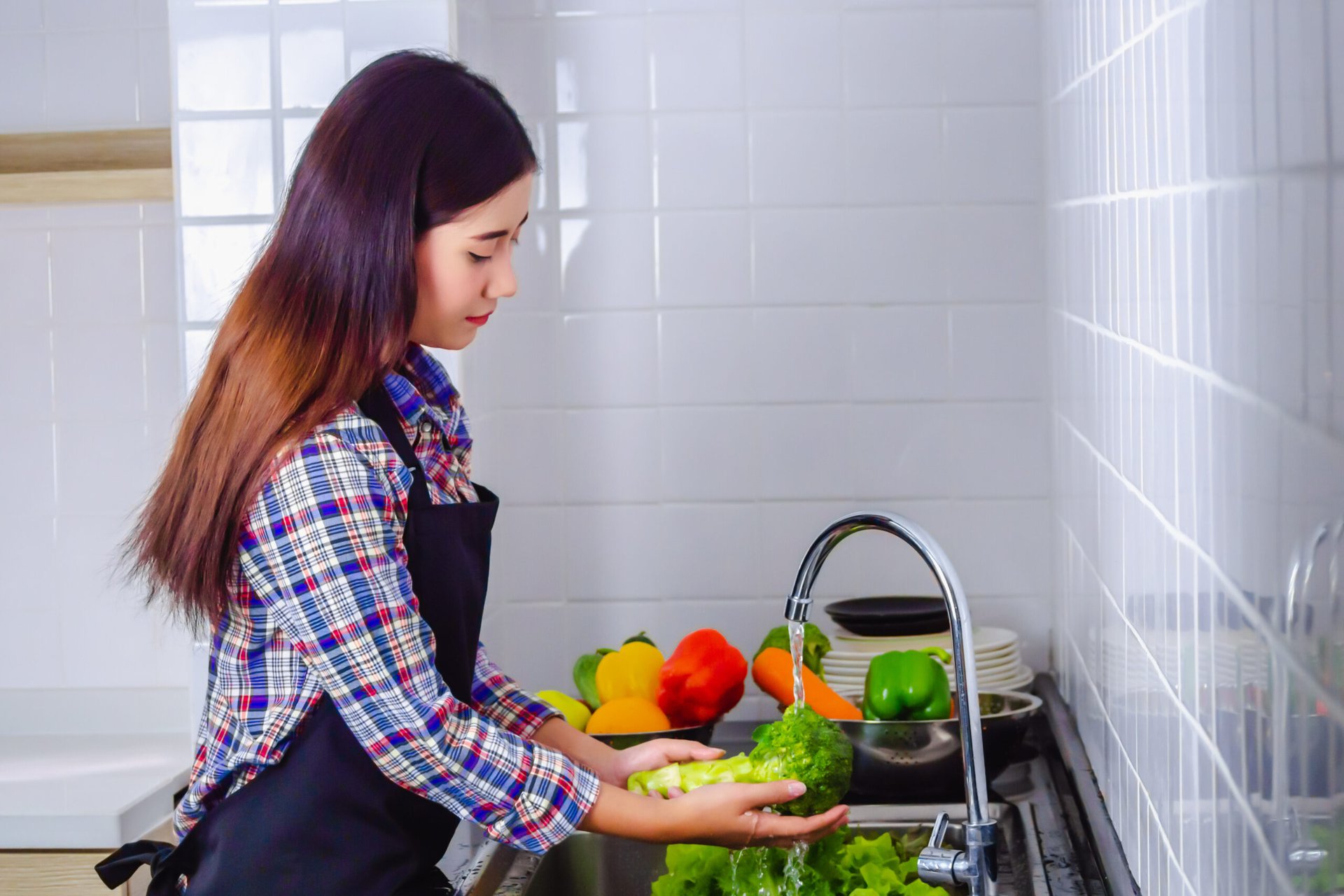
The COVID-19 pandemic put hygiene on center stage, and many of us have a new awareness of the need to keep fresh produce clean and safe.
That’s a good thing, for sure, but some confusion lingers about safe food handling, especially when it comes to fruits and vegetables.
For example, should we wash fruits and vegetables with soap to eliminate germs? After all, if that’s good for cleaning our bodies, shouldn’t it also be good for food?
Actually, no. That’s one of several mistakes people commonly make when washing produce, as we’ll explain in a moment.
Keep reading to learn how to avoid this and other well-intentioned gaffes.
1. Washing produce with soap
Using soap to clean produce would seem logical since washing your hands with soap and water is recommended as a way to kill COVID-19 and other germs. But experts say you should avoid using soap or detergent to wash produce.
In fact, as far as COVID-19 goes, health authorities don’t advise giving fresh produce any special treatment. The illness is spread primarily from person to person through respiratory droplets, so you aren’t likely to contract the disease from fresh foods. The World Health Organization says:
“There is currently no evidence that people can catch COVID-19 from food, including fruits and vegetables.”
What’s more, washing produce with soap is likely to cause you to ingest some with the food, which can cause diarrhea or vomiting, according to the University of Maine Cooperative Extension.
That doesn’t mean you shouldn’t clean produce before eating it. Other germs, unrelated to COVID-19, can make you seriously ill.
Unwashed fruits and vegetables can harbor harmful bacteria, including salmonella, E. coli and listeria, according to the Centers for Disease Control and Prevention (CDC). These germs on fresh produce probably are responsible for much of the foodborne illness in the U.S.
Here’s how the U.S. Food and Drug Administration (FDA) says to wash produce:
“Rinse whole fruits and vegetables under running water and dry with a clean cloth, paper towel, or salad spinner.”
2. Mixing cleaning chemicals
Household chemicals can make effective cleaning agents, but some are especially dangerous when combined, as you’ll learn in “Never Use These Cleaning Products Together.”
Case in point: In 2020, the CDC reported the case of a woman who, believing it important to clean fruits and vegetables to avoid COVID-19, soaked produce at home in a mixture of bleach, vinegar and hot water. But mixing chlorine bleach with an acid like vinegar can create dangerous chlorine gas.
The woman called 911 after suffering problems breathing, coughing and wheezing. She was taken to emergency care by ambulance and treated for mild hypoxemia (inadequate oxygen levels) before being released. Read the full story in “Poison Center Calls Spike as COVID-19 Spreads: Are You Safe?”
3. Forgetting to wash your hands
Always wash your hands before handling produce or touching any food.
Here is the first rule of the FDA’s Food Safe Meal Prep: Before preparing any food, including produce, wash your hands with soap and water for at least 20 seconds.
4. Washing fruit and vegetables too soon
Rinsing off fruits and vegetables as soon you get them home seems like a smart habit. But it’s best to wait to wash produce until you need it.
Dampness encourages the growth of bacteria, increasing the chance of spoilage, food research scientist Amanda Deering of Purdue University tells The Washington Post.
The advice goes double for berries. Hold off washing until just before you eat these fragile fruits so they don’t get mushy or otherwise break down, Better Homes & Gardens advises.
You can rinse strawberries in a colander under running water. However, the pressure from running water can crush fragile raspberries, blackberries, boysenberries and blueberries. So place those berries gently into a colander and dip it in a bowl of cold water, floating and swishing the fruit to loosen dirt and bacteria.
Let the berries drain and spread them on a layer of paper towels. Cover with another paper towel and carefully pat them dry.
5. Spending money on produce wash
Commercial produce washes are a waste of money, expert sources agree.
When University of Maine researchers tested three commercial produce wash products, they concluded that rinsing produce with distilled water was more effective than using costly produce washes.
The researchers recommend soaking fruits and vegetables in distilled water for one to two minutes to reduce any contamination from germs.
6. Washing ‘pre-washed’ produce
Consumers trying to do the right thing can be forgiven for believing that washing all produce applies even to packaged lettuce, spinach and other vegetables. But you don’t need to wash fruits and vegetables packaged with labels like “ready to eat,” “washed,” “prewashed” and “triple washed,” the University of Maine Extension says.
Other sources agree. The FDA says that if you do wash these pre-cleaned foods, be careful:
“If you choose to wash produce marked as ‘pre-washed’ or ‘ready-to-eat,’ be sure that it does not come in contact with unclean surfaces or utensils. This will help to avoid cross contamination.”
7. Not washing fruit with a peel
The skin on a fruit or vegetable protects it, so you may expect that the flesh inside should be clean. But the outer layer or skin can hold residue of pesticides, dirt or germs. The CDC warns:
“Germs on the peeling or skin can get inside fruits and vegetables when you cut them.”
Make sure, then, to wash or scrub even produce that has a peel.





Add a Comment
Our Policy: We welcome relevant and respectful comments in order to foster healthy and informative discussions. All other comments may be removed. Comments with links are automatically held for moderation.